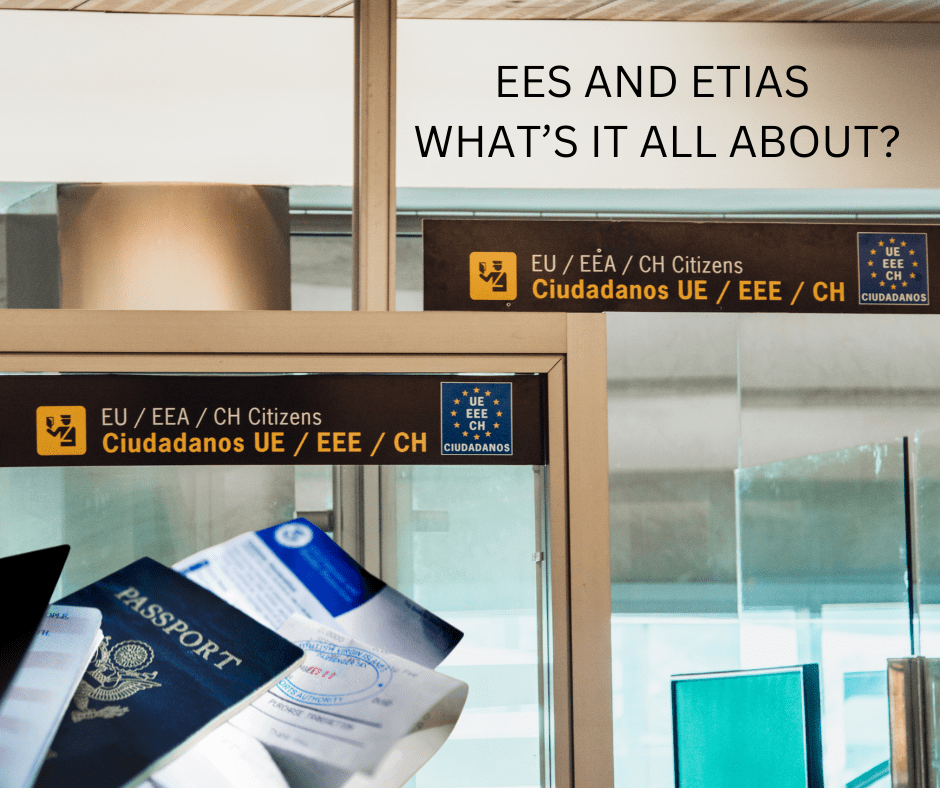By Naomi Houston The European Commission Office has introduced a new travel regulation called

By Naomi Houston
The European Commission Office has introduced a new travel regulation called the Entry/Exit System (EES). It’s important to note that the EES is distinct from the European Travel Information and Authorization System (ETIAS). While the EES functions as an entry and exit tracking system, ETIAS operates as a visa waiver for citizens of third countries. The EES initiative is designed to document all migrations across the external Schengen area borders, ensuring thorough monitoring and enhancing security.
Both the EES and ETIAS aim to ensure the safety of individuals travelling to Europe. These visa measures have been on the agenda of the European Parliament and the European Council for several years. With the implementation of an online application process, travellers can now apply for these authorisations with ease and minimal stress. Eligible applicants will receive a response within just a few minutes of submitting their application.
ETIAS system.
Since the UK has left the European Union, how we travel to some European countries is going to change. UK citizens will have to obtain some documentation before travelling to countries like Italy, Germany, the Czech Republic to name a few. The documentation being implemented is known as ETIAS.
Starting in the first half of 2025, some 1.4 billion people from over 60 visa-exempt countries will be required to have a travel authorisation to enter 30 European countries for a short stay.
What is an ETIAS?
ETIAS (European Travel Information and Authorization System) is a visa waiver program that is being implemented by the European Union. It is designed for citizens of visa-exempt countries who wish to travel to any of these countries:

Although not a visa, ETIAS is a mandatory electronic travel authorization that travellers must obtain before entering these territories.
The authorisation is linked to a traveller’s passport, and it is valid for up to three years or until the passport expires, whichever comes first. If you get a new passport, you need to get a new ETIAS travel authorisation.
With a valid ETIAS travel authorisation, you can enter the territory of these European countries as often as you want for short-term stays – normally for up to 90 days in any 180-day period. However, it does not guarantee entry. When you arrive, a border guard will ask to see your passport and other documents and verify that you meet the entry conditions.
Any visa-exempt country (the UK being one) needs to apply for an ETIAS travel authorisation to enable them to travel to any of the 30 countries listed above.
How it affects us in Northern Ireland
You are required to have a valid ETIAS travel authorisation if you’re travelling to any of the European countries listed above for a short-term stay (90 days in any 180-day period).
UK nationals who wish to stay longer must meet the entry requirements in accordance with national or EU migration law, such as holding a visa or residence permit.
UK nationals and their family members who are beneficiaries of the Withdrawal Agreement are exempt from ETIAS: they may reside on the territory of their EU host country and travel to other European countries requiring ETIAS if they hold documents proving their status.
The application process
When filling out the application, you will be asked to provide the following information:
- Personal information including your name(s), surname, date and place of birth, nationality, home address, parents’ first names, email address and phone number
- Travel document details
- Details about your level of education and current occupation
- Details about your intended travel and stay in any of the countries requiring ETIAS
- Details about any criminal convictions, any past travels to war or conflict zones, and whether you have recently been subject of a decision requiring you to leave the territory of any country.
If someone is submitting the application on your behalf, that person will have to provide their surname, first name(s), as well as information on their relationship to you and a confirmation that this person and you have signed the declaration of representation.
Applications for anyone under 18 years of age must be submitted by a person exercising permanent or temporary parental authority or legal guardianship over the child.
Cost
 You will need to cover a fee of 7 euros. You can use a variety of online payment options to do this.
You will need to cover a fee of 7 euros. You can use a variety of online payment options to do this.
Applicants who are under 18 or above 70 years of age are exempt from this payment. Also exempt are family members of EU citizens or of non-EU nationals who have the right to move freely throughout the European Union.
For UK travellers, understanding and preparing for this new requirement will be essential for future European trips. As Europe continues to welcome millions of visitors each year, ETIAS will play a crucial role in ensuring that the borders remain secure while facilitating the ease of movement that makes Europe so unique. Whether you’re planning a short holiday, a business trip, or any other adventure, securing your ETIAS authorization will soon be a vital part of the journey.
For more information click the link https://travel-europe.europa.eu/etias_en
EES system
To add further misery for non eu travellers there is also a new Entry/Exit System (EES) for the EU
It is an automated IT system for registering non-EU nationals travelling for a short stay, each time they cross the external borders of any of the following European countries using the system:
List of European countries using the EES
For the purpose of the EES, ‘non-EU national’ means a traveller not holding the nationality of any European Union country or the nationality of Iceland, Liechtenstein, Norway or Switzerland.
‘Short stay’ means up to 90 days within any 180-day period. This period is calculated as a single period for all the European countries using the EES.
Which countries’ nationals must be registered in the EES?
The system applies to you if you are a non-EU national and you:
- need a short-stay visa to travel to European countries using the EES
or
- do not need a visa to travel for a short stay in the European countries using the EES
Your entries and exits, or entry refusals will be electronically registered in the EES.
In Cyprus and Ireland, despite being countries of the European Union, passports will still be stamped manually.
Exemptions to registration in the EES apply – see To whom does the EES not apply?
What are the benefits of the EES?
- The Entry/Exit System modernises the management of the EU’s external borders, gradually improving the experience for travellers.
- It identifies overstayers and provides reliable data on entries, exits, and refusals of entry.
- This system will effectively combat identity fraud by collecting biometric data.
- Security within the EU will be strengthened thanks to improved border checks, use of electronic records and biometric data.
- The EES promotes real-time information sharing, ensuring that border authorities across the EU have the right information at the right time.
| When will the EES go live? | What is the EES for? | Who is affected? |
| Sometime in 2024 | The EES modernises border management by increasing efficiency and quality of processes at the border and replacing passport stamping. It also simplifies travel and makes it safer. | Non-EU nationals travelling for a short stayto a European country using the EES.
Exemptions apply – see below |
The EES does not apply to:
– Nationals of the European countries using the EES, as well as Cyprus and Ireland
– Non-EU nationals who hold a residence card and are immediately related to an EU national
– Non-EU nationals who hold a residence card or a residence permit and are immediately related to a non-EU national who can travel throughout Europe like an EU citizen
– Non-EU nationals travelling to Europe as part of an intra-corporate transfer or for the purposes of research, studies, training, voluntary service, pupil exchange schemes or educational projects and au-pairing
– Holders of residence permits and long-stay visas
– Nationals of Andorra, Monaco and San Marino and holders of a passport issued by the Vatican City State or the Holy See
– People exempt from border checks or who have been granted certain privileges with respect to border checks (such as heads of state, cross-border workers, etc.)
– People not required to cross external borders solely at border crossing points and during fixed opening hours
– People holding a valid local border traffic permit
– Crew members of passenger and goods trains on international connecting journeys
– People holding a valid Facilitated Rail Transit Document or valid Facilitated Transit Document, provided they travel by train and do not disembark anywhere within the territory of an EU Member State
Please check with the EU before you travel for the very latest information